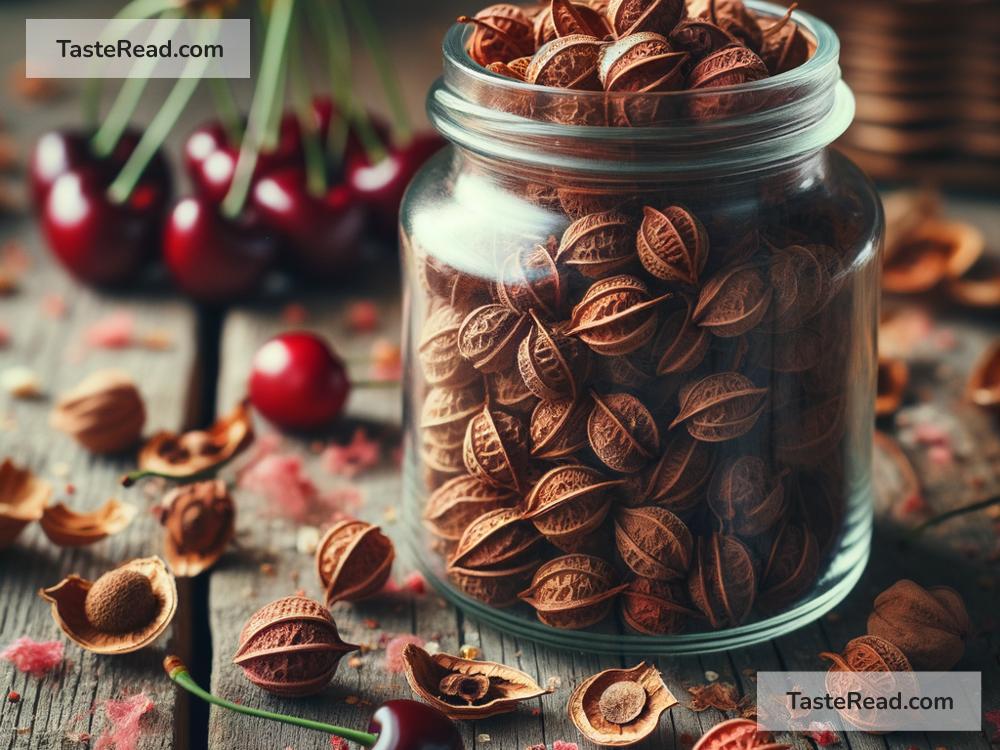Why Cherry Pits Are Surprisingly Useful
When you eat cherries, you probably enjoy their sweet and tangy flavor, toss the stems aside, and spit out the pits without giving them much thought. It’s easy to overlook these tiny, hard seeds hidden inside the juicy fruit, but cherry pits are surprisingly useful in ways you may not expect. Instead of heading straight for the trash, they can have a second life in your home, your health, or even your garden. Let’s explore how these little pits can be put to good use!
1. Nature’s Heating and Cooling Packs
One of the most interesting uses for cherry pits is their ability to hold heat or stay cold. Because of their small size and smooth surface, cherry pits can be used to make DIY heating and cooling packs. Here’s how it works:
Cherry pits are cleaned, dried, and placed into a fabric pouch or pillow. When you need some warmth for sore muscles or to keep cozy on a cold night, just heat the pouch in the microwave or oven. The pits retain the heat and release it slowly, providing a comforting warmth. On the other hand, if you need something cold to soothe swollen joints or cool down, pop the pouch into the freezer, and the pits will stay cold for hours.
Many people have turned cherry pits into reusable “heat bags” that are more sustainable than store-bought alternatives. Plus, their natural texture makes them comfortable to use. It’s a simple way to waste less and repurpose something that often gets thrown away.
2. Eco-Friendly Crafts and Décor
Cherry pits are surprisingly versatile for creative crafts and eco-friendly home décor! You can use cherry pits as fillers for cushions, handmade bean bags, or even sensory bottles for kids. Their small, uniform size and smooth texture make them ideal for projects where beads or other synthetic materials would typically be used.
You can also use cherry pits to make unique decorations. Some people use them for mosaics, arranging them into patterns that add a rustic touch to home designs. Others incorporate them into jewelry-making by dyeing and threading the pits together for necklaces or bracelets. These creative endeavors give cherry pits a second life and reduce waste.
3. Natural Compost Boosters for Gardening
If you’re into gardening, cherry pits can help enrich your soil when properly composted. While they are hard and take time to break down, with patience and the right composting environment, the organic material in the pits can eventually decompose and add nutrients to your garden.
Cherry pits contain trace elements of carbon and organic matter, which plants love. However, make sure to crush or grind the pits before tossing them in your compost pile to speed up the process. Whole pits might take years to break down! Once the compost is ready, it can help fertilize your flowers or vegetables, turning the remains of your cherries into something beneficial for your garden.
4. Cherry Pit Oil: A Natural Beauty Secret
Did you know that cherry pits can be used to extract oil? Cherry pit oil is a hidden gem in the beauty industry. When the pits are pressed, they release a lightweight oil that’s rich in antioxidants, vitamins, and essential fatty acids. This oil is often used as an ingredient in skincare products because it moisturizes the skin, reduces dryness, and can even help fight signs of aging.
Some people use cherry pit oil directly on their skin as a natural alternative to store-bought lotions. It absorbs quickly and has a gentle feel, making it suitable for sensitive skin. If you’re into DIY beauty recipes, cherry pit oil can also be added to homemade soaps, lip balms, or hair masks. It’s amazing to think that something as tiny as a cherry pit can help improve your skincare routine!
5. Grinding for Flavor Experiments
While most people assume cherry pits are purely waste, they actually contain subtle flavors that can be used in cooking when processed properly. Inside the pit is a compound called benzaldehyde, which has a mild almond-like aroma. As a result, ground cherry pits have been used to add flavor to certain dishes, especially desserts.
However, there’s a bit of caution here: cherry pits contain amygdalin, which could turn into small amounts of cyanide when eaten in large quantities. Grinding cherry pits for flavor should only be done with a solid understanding of safe practices or by using methods that reduce any risks. It’s a fun experiment for adventurous cooks but not something to casually throw into your baking!
6. Fuel for Wood-burning Stoves
Believe it or not, cherry pits can be used as biofuel! Because the pits are dense and dry, they burn well and can be used as an alternative to wood in some stoves or fireplaces. This eco-friendly option is perfect for those looking to reduce reliance on traditional wood or coal.
In Europe, cherry pits have been used in pellet-burning stoves, providing a sustainable heating option for homes. If you’ve got a lot of cherry pits from summer snacking, this could be one more way to put them to good use.
Conclusion: Don’t Toss Those Pits!
Cherry pits might seem like an insignificant part of your favorite summer fruit, but they are far more versatile than they appear. From heating packs to beauty oils, compost material, and even biofuel, these tiny seeds can be repurposed in creative, practical, and eco-friendly ways. So, the next time you enjoy a bowl of cherries, consider saving the pits and putting them to work. Not only is it better for the planet, but it’s a great way to explore the surprising potential of something most people overlook!


